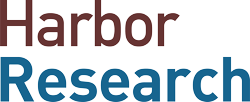Fathym has developed an innovative application development framework to enable software developers, subject matter experts and business users to rapidly and collaboratively build diverse data applications. The framework utilizes open source tools and an open data architecture enabled by microservices that seamlessly integrate with technology stacks to future-proof innovations.
INTRODUCTION
Enterprise software has undergone a dramatic evolution in the last 20 or so years. Today we have containerization, much less importance placed on the choice of programming language, and microservices available everywhere. This enables very powerful software solutions, but it also creates a huge amount of complexity.
Fathym, a Boulder, Colorado-based company was founded to democratize software development. Their platform empowers developers and business users to quickly and collaboratively build data applications, machine learning solutions and Internet of Things (IoT) deployments by providing operational and technical staff with tools to organize their data, create applications and manage infrastructure without the need for “armies” of coders, developers, architects and specialists.
Fathym’s new development and deployment platform leverages the combined potential and convergence of two critical innovations:
- OpenCore IDE for Data Application Development: modular framework that utilizes open source and low-code software development tools, and decouples frontend and backend development enabling new workflow automation and innovation at the edge;
- Microservices Orchestration: microservices and cloud infrastructure automation enable a more modular, distributed and independently deployable approach to developing software systems compared to monolithic application architectures of the past.
Fathym understands that developers and users need a completely new approach to automating workflow—one where open source software development tools and libraries are modular and interchangeable, and where automation of software development and re-use of software components can be realized across an ever-broader spectrum of development communities and domains.
By combining multiple parallel innovations in cloud infrastructure management, workflow automation and data application development, Fathym is multiplying their impacts on developers, integrators, users and enterprises. Fathym understands the need for a common data application development framework that enables software developers, subject matter experts and business users to rapidly and collaboratively build diverse data applications enabled by microservices.
By aggressively leveraging open source software tools and a flexible open data architecture, Fathym’s framework enables developers to launch applications faster, with fewer specialists, dramatically reducing the time and cost that it takes to build new solutions. This approach, in turn, allows diverse users and customers to refocus on their business challenges as opposed to technology development or infrastructure management.
EVOLVING MARKET AND COMPETITIVE STRUCTURE
Fathym’s innovations are evolving in a competitive environment that is in a state of rapid change. Fathym’s application development and workflow automation innovations are competing with multiple segments of software players including:
- Cloud computing infrastructure and automation players
- Low-code/no-code software development tools
- Diverse system and app development SaaS offerings
- IoT platforms
- Big data workflows and management
The many diverse categories of players and software offerings are increasingly causing confusion among developers, users and customers. Negative feedback from developer communities often revolves around the myriad of fragmented tools and complex software infrastructure that need to be managed within developer workflows, as well as the degree to which many of these offerings tend to drive vendor lock-in for users and customers.

Existing web development platforms and so-called low-code frameworks offer a graphical UI to simplify the process of structuring a program, and then behind-the-scenes the system assembles the actual code that gives machines their instructions. The problem for the user of these tools comes when they—or more likely their developers—have a subtler problem and need to go deeper. Today’s typical web development platforms and low-code frameworks all manipulate the same programming problems, but their different solutions are locked away in a more tightly coupled data structure that their simplified UI hides from the user. This leaves their customers “vendor-locked” into that particular platform to exclusion of anything else.
Knowing this to be the case, Fathym turned the telescope around. They started by fully engaging the complexity of back-end software innovations, then painstakingly abstracted that complexity until they arrived at a simple front-end, but one that also allows trained developers to go deeper and re-engage the underlying complexity if they ever have the need to do so. By decoupling front-end and back-end development, Fathym enables new workflow automation, expanded deployment management capabilities and data innovation at the edge.
Fathym’s platform is built to support open data standards and open source tools. This prevents customers from being locked into a proprietary system. Apps built on the Fathym platform can be easily integrated with third-party open source frameworks and with commercial off–the-shelf computer and networking equipment, simplifying deployment, upgrade and migration strategies, and helping to future-proof data applications.
CONCLUSION
Fathym’s distinction lies in its combination and integration of cloud infrastructure management, workflow automation and application development and deployment tools, as well as the company’s aggressive commitment to an open and flexible architecture. Fathym’s core innovations are well aligned with diverse developer preferences:
- Decoupling front-end and back-end development to drive new distributed computing and software innovations closer to endpoints. This enables the necessary real-time processing and low latency at the edge.
- Simplifying edge and cloud application development via low-code tools.
- Making application development and software developer workflows much easier by integrating Git and Github with source code management and version-control tools that create and automate collaboration networks for developers.
- Microservices capabilities that enable applications to continuously evolve with business needs. This replaces expensive, monolithic “hardwired” applications that are difficult to augment or upgrade. ✦
This blog post is excerpted from our white paper “Future Proof Computing: Fathym’s Low-Code Framework.”
Fill out the form below to download the paper for free.




